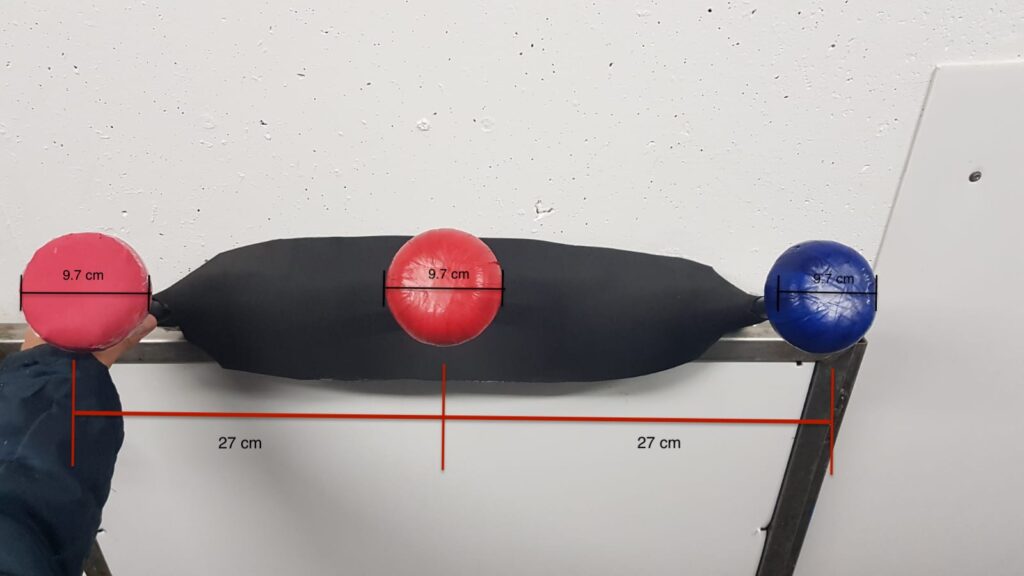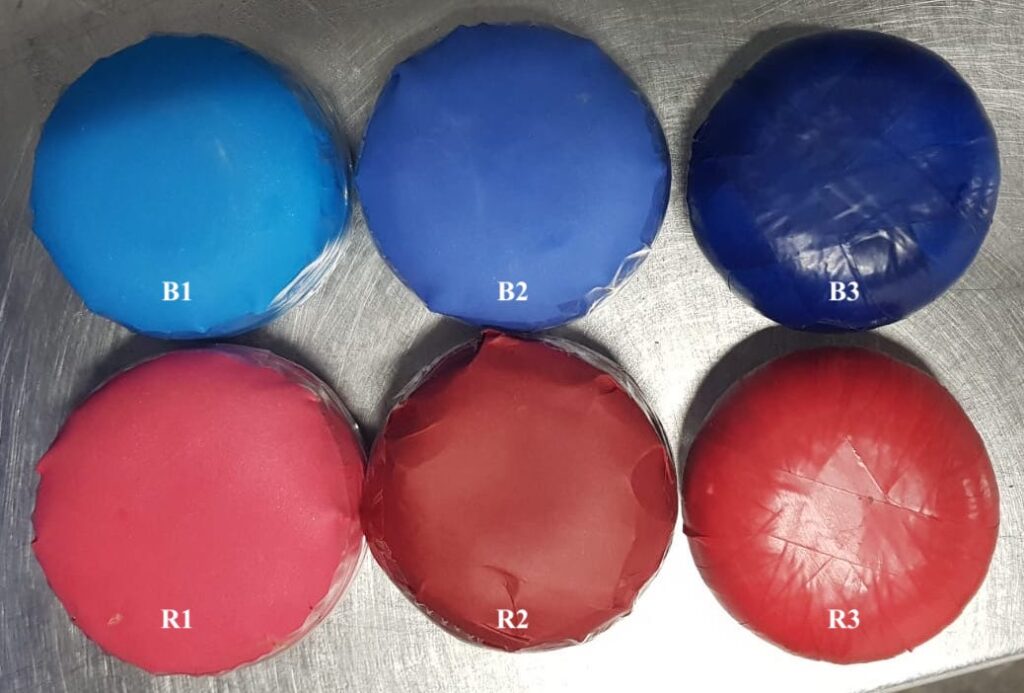ANIMALS AND HOUSING

The present study took place at the Oceanogràfic in Valencia, Spain. The study was held on a population of 34 individuals of gentoo penguins (Pygoscelis papua) housed together. From the exhibition the animals have access to the back part of the enclosure, hidden from the public, where they are fed two times a day and where training and testing took place. For the study 14 individuals were selected from the group, six males and eight females of different ages, ranging from one year old to 22 years old.
EXPERIMENTAL SETUP

The penguins were divided into either a red or a blue group and were trained with positive reinforcement to associate with their colour. Each individual was trained to touch either a red or blue target with the beak. The experiment took place in the back room of the exhibit, and the individuals had complete freedom to join or leave the experiment at any time. During the testing, a three-choice target with two incorrect colours and one correct colour (e.g., two red targets and one blue target for the individual trained for the blue target) was presented to the individual five times per session, with two sessions per day, during 15 sessions, at a distance of 1.50 m. Each individual was tested alone, or with another individual that was not part of the study, and had a five second time limit to touch the target. The three-choice target was built with PVC tubes.

Three different brightness versions of blue, labeled in order B1, B2 and B3 and three different brightness versions of red, labeled in order R1, R2 and R3, were interchanged randomly on the target to ensure that the animals recognized the colour and not the e.g. brightest target. The position of the single colour target was also changed randomly at every experimental session to avoid conditioning the animal for a specific position. Lastly, in order to avoid giving cues to the individuals, the tester was wearing dark sunglasses that covered the eyes and the hand holding the targets was covered by a black sheet.
EXPERIMENTAL PROCEDURE

The selected individuals were separated in two groups, one group of seven was trained to touch the red target, and the other group of seven was trained to touch the blue target. The training was conducted using a whistle as secondary reinforcement, to pinpoint the correct response and let the animal understand faster which behaviour is being reinforced, and fish was given to positively reinforce successful selection of the correct colour. The training was divided in four steps: touch the target (while the trainer was holding it), target in position (the single target was held by the tester that was staying 1.5 m from the trainer, at the testing position), two target (held by the tester at the testing position) and three targets. Training sessions were conducted five days a week with two sessions per day. Once the penguins were confidently touching the target at a distance, a second target with the incorrect colour was introduced. The individuals were rewarded with fish only when they touched the target with the colour they have been chosen for and would not get anything when they touched the incorrect target. When the learning criterion was reached by the penguins, within a week or two depending on the individual, the three-choice target was introduced. One or two training sessions with the three-choice target were done to accustom the penguins to the new experimental design, before data collection commenced. During data collection the trainer was sitting at the starting position with the food rewards while the tester was presenting the targets at the testing position. The testing phase was conducted using the three-choice target, thus the penguins had to choose between one correct choice and two incorrected choices giving, therefore, a probability of touching the correct target of 0.33. The tested individual had to stay with the trainer until the trainer signed to the penguin to go to the targets. From this moment the penguin had a time limit of 5 s to touch one target. If the penguin touched the correct target the trainer would use the secondary reinforcement, and the penguin would go back to him to get the reward and wait for the next trial. If the penguin touched the incorrect target, the targets would be removed and the penguin would be sent back to the trainer (that did not use the secondary reinforcement, nor rewarded the individual) and another trial would follow right away. The targets were randomly changed, both in position (that also included oblique) and brightness of the colours.
DATA ANALYSIS
The target choice was scored as either correct (1) or incorrect (0) depending on which colour was chosen. Each session was limited to five trials to ensure that each individual penguin remained focused on the task. The results were then expressed as the frequency in percentage, of a correct choice. A binomial test was performed, using RStudio (RStudio Team, 2021) to calculate the significance thresholds (at p ≤ 0.05, p ≤ 0.01 and p ≤ 0.001) for the correct choice frequency. The test used n = 75 (representing 15 sessions with five trials each) and p = 0.33 as the hypothesized probability of success, considering the three-choice target. The correct choice frequency for each individual was used to perform a Wilcoxon-Mann-Whitney test, using RStudio (RStudio Team, 2021), to analyse whether there were any differences between male and female individuals, as well as between individuals trained for the red target and those trained for the blue target.